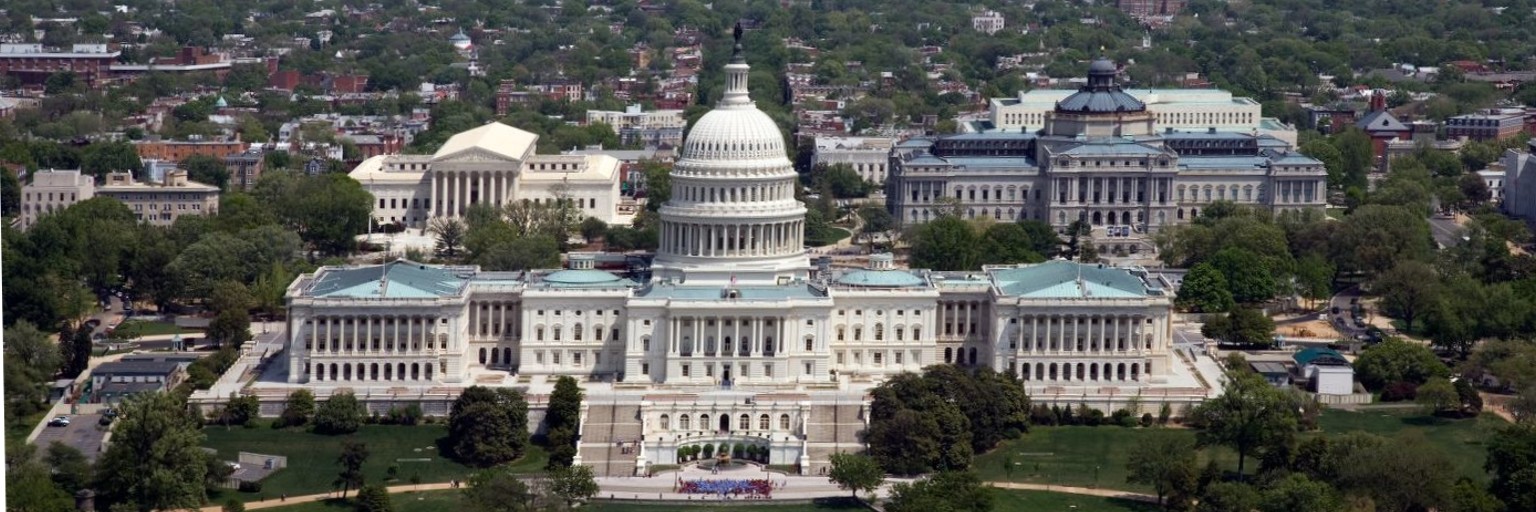Article I of the Constitution
Article I outlines the structure of the legislative branch, a bi-cameral legislature composed of two chambers (Senate and House of Representatives), as well as the qualifications and requirements to become a Senator or Representative and the procedures that members of Congress must follow to fulfill their duties. One of these duties is impeachment of public officials, including the President. Each state has two Senators and proportional representation of Representatives based on population (excluding “Indians not taxed” and “three fifths of all other Persons”). This “three fifths rule” applied to slaves. Senators serve a term of six years while Representatives are elected every two years.
- Section 8 lists the powers of Congress, such as the power to “regulate Commerce,” coin and borrow money, establish a “uniform Rule of Naturalization,” “raise and support Armies,” “provide and maintain a Navy,” and to “lay and collect” taxes.
- Section 9 lists the limitations of Congress, such as not suspending the Writ of Habeas Corpus “unless when in Cases of Rebellion or Invasion the public Safety may require it,” not passing a Bill of Attainder or ex post facto law, and not granting a title of nobility. And, no public official may accept “any present, Emolument, Office, or Title, of any Kind whatever, from any King, Prince, or foreign State,” without “Consent of Congress.”
How a Bill Becomes a Law
Congress has the duty to “make all Laws which shall be necessary and proper” for executing its powers under the Constitution. This can take some time.
- An idea for a law in the form of a “bill” can be introduced in the Senate or the House of Representatives by a member who sponsors it.
- The bill is assigned to a legislative committee who will conduct research and may make changes to the bill.
- The bill is then put forth for a vote in the chamber where it was introduced. If the bill passes by a majority, it goes to the other chamber for a similar process and then voted upon.
- If both the Senate and House of Representatives pass the bill, and they reconcile any differences between the versions, and then pass the same bill, it is presented to the President.
- The President can approve it or reject (veto) the bill.
-
- Congress can override the President’s veto by passing the bill by a two-thirds vote in the Senate and House of Representatives. Unless, the President holds onto the bill unsigned, until it’s too late to be voted on during the legislative session, which is called a “pocket veto.”
Gibbons v. Ogden (1824)
The Supreme Court held that the power held by Congress to regulate commerce “among the Several states” and “with foreign Nations” included interstate navigation by steam boat. This decision led to an expansion of federal power over commercial interests in the United States. Learn More
Heart of Atlanta Motel, Inc. v. United States (1964)
The Supreme Court upheld the constitutionality of the Civil Rights Act of 1964, which banned racial discrimination in public accommodations. The Court declared that the federal government held the power to regulate interstate commerce, which included public accommodations like hotels, which have an impact on interstate commerce. Learn More
- Constitution Annotated, produced by the Congressional Research Service
- Legislative Branch, an annotation posted by the National Constitution Center
- The Legislative Process, description by House of Representatives
The Legislative Process, posted by the National Archives, including lesson plans, materials, and resources.
“Congressional Committees and the Legislative Process,” posted by EDSITEment, including lesson plans to accompany this video.

